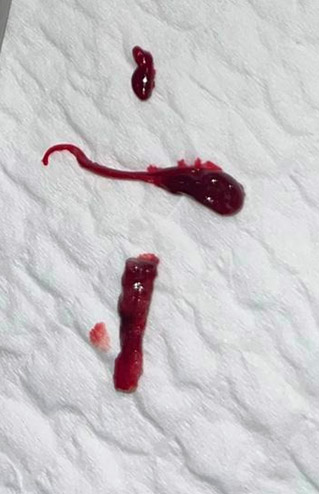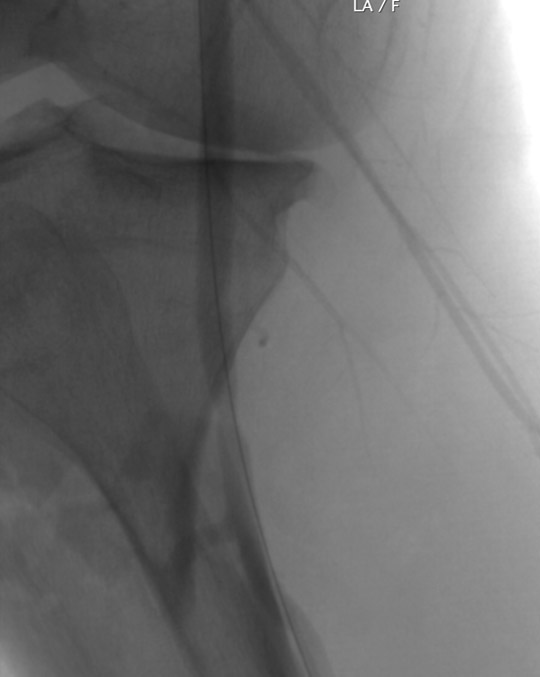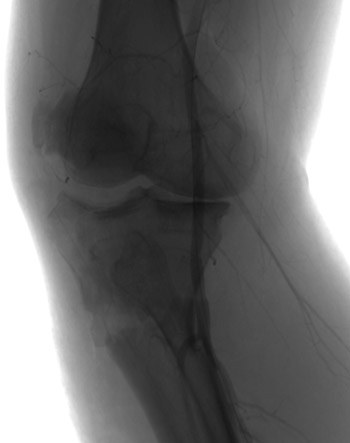Acute limb ischemia after standard trauma: full endo management!
Following a motorbike accident, a 52-year-old man presented with lower limb ischemia with motor and sensory deficits, right tibial fracture and a related popliteal dissection, left hand luxation, and short popliteal occlusion with remaining blood flow in BTK vessels. Based on his CT scan, what would be your strategy?
- The patient was a 52-year-old man.
- He had no particular medical history.
- He had a motorbike accident at 60 km/h with no cranial trauma at 00:00
- He arrived at the hospital at 09:00 with:
- Clinical findings: lower limb ischemia with motor and sensory deficits.
- Body scan results: right tibial fracture, left hand luxation.
- Vascular lesion: appearance of popliteal dissection related to the tibial comminuted fracture; short popliteal occlusion with remaining blood flow in below-the-knee (BTK) vessels.
CT scan

Analyze the post-traumatic CT scan and specify the initial therapeutic approach you would select, followed by the subsequent step you would take
The orthopedic team decided to do external fixation and wait 15 days before orthopedic repair
We started with endovascular attempt
- Anterograd superficial puncture
- 7Fr sheath up to over-the-knee popliteal artery
First angiography
- Short occlusion of BTK popliteal artery
- Penumbra® catheter thromboaspiration with multiple clots


Second angiography
- Satisfying result, with recuperation of the three BTK vessels
- Ballooning with 5 mm Mustang™ balloon dilatation catheter (Boston Scientific): 2-minute inflation

We opted to stent the remaining dissected lesion using a 5.5 mm x 40 mm Supera™ peripheral stent (Abbott Vascular), following prior artery dilation with a 5 mm balloon.

Final result
- Immediate foot recoloration
- Fasciotomy with muscular liberation
- Pedal pulse
Orthopedic repair was to be planned shortly


Get the latest clinical cases and breaking news delivered straight to your inbox!

